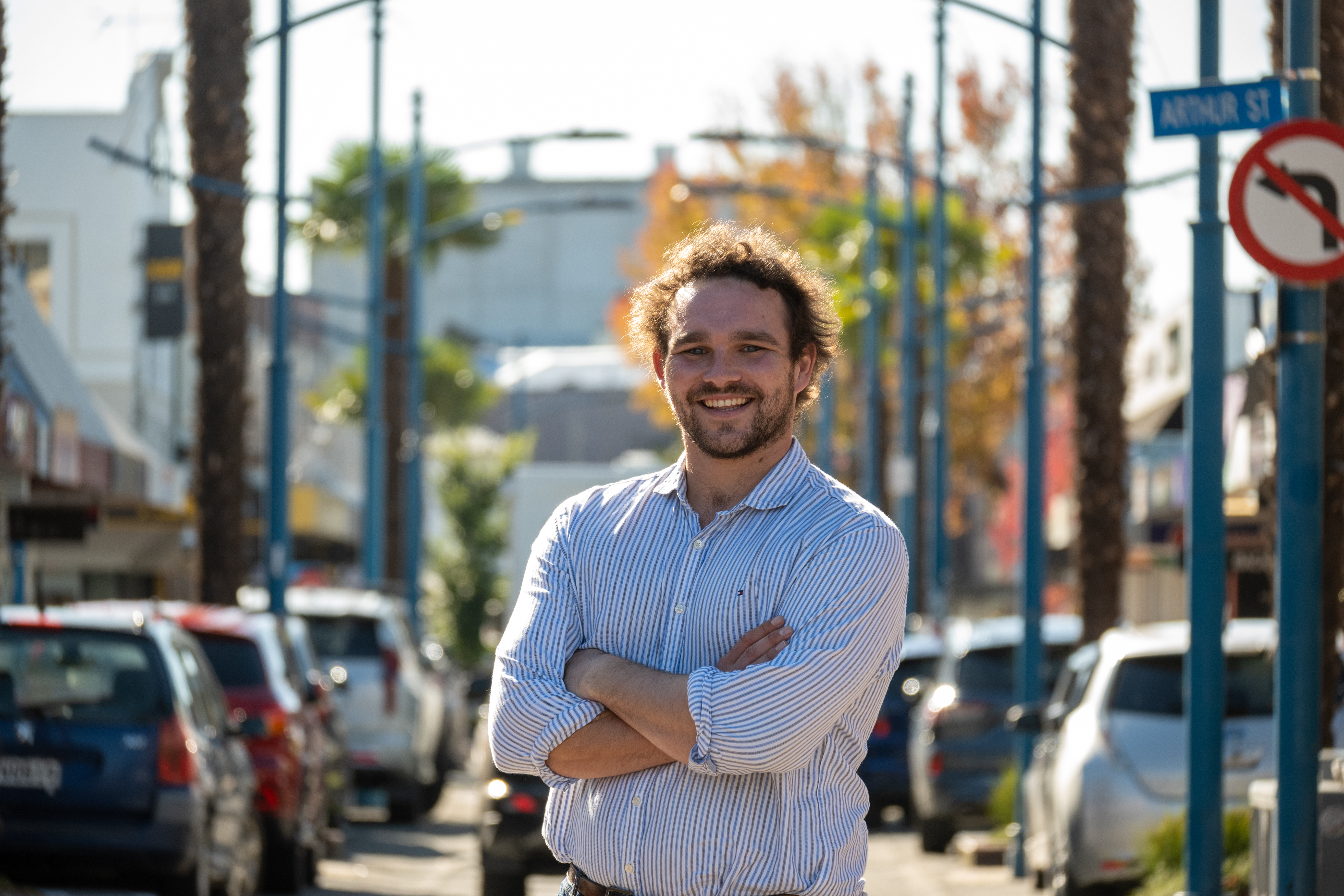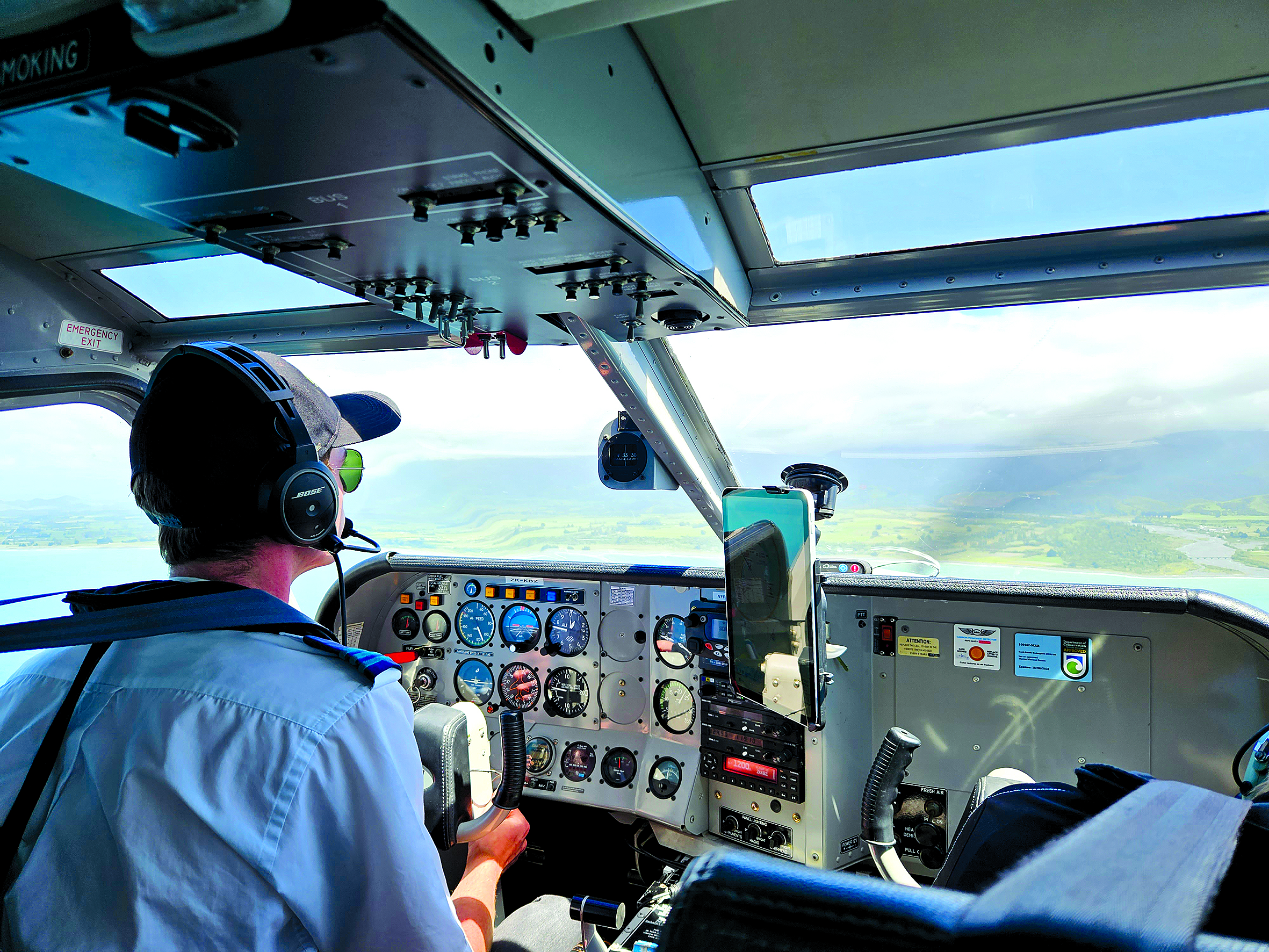Cracking Kaikōura


Captain Sam keeps a keen eye ahead for signs of special guests breaching the water’s surface. Photo: William Woodworth
Kaikōura’s famous canyon and the whales, dolphins, seals and many other species brought to the Kaikōura Coast are traditionally spotted from boats.
However, Wings over Whales takes guests to a new level literally, soaring into the skies aboard their Gippsland GA8 Airvans, to admire both the wildlife and equally-stunning backdrop of Kaikōura, plus the towering ranges looking down onto the peninsula.
Based out of Kaikōura Airport, Wings over Whales invite passengers to view the region’s most famous residents from the skies – while collaborating with other businesses whose guide boats help provide the most efficient scanners of the ocean to get coordinates.
“The hardest flight of the day is always the first because you have exactly no idea where our resident sperm whales are and what their breath timings are for the day”, says Captain Sam.
He welcomed our crew of six eager passengers from across the world, took us through an explanatory briefing and safety advice before leading us aboard the second flight of the day at 11am.

Sam, who gained his personal and commercial pilot’s licenses as soon as he could at age 17 and 18 respectively, moved to Kaikōura from his hometown of Nelson to work at Wings over Whales.
“We do up to 10 flights a day, and on my best day I saw four different species of whale, with a few of each type if you’re really lucky.
“I grew up fascinated by planes and always wanting to fly, so being able to do it on a daily basis over a stunning part of the country is just fantastic.”
As we strap in and taxi the small runway, we don microphones and headphones to stay in touch over the rumbling engine as Sam flicks the controls forward and we speed off and up into a stunning sky.

The iridescent Kaikōura coastal waters glimmered as the little plane rattled above, with waves like a Pacific Island advertisement dropping off into deep caverns – becoming almost black as we cruise over Goose Bay and out over the peninsula
Sam says there has been sightings already of some sperm whales, some dusky dolphins and a possible sighting of a pair of humpback whales this morning.
“Our year-round resident Kaikōura sperm whales are named, and we can work out who is who by their markings on their tails”, he explains.
“It is 100 percent luck of the draw if the whales want to play ball though, and as much as we’d like sometimes, we can’t schedule them or pay them to turn up.”
However, we’re lucky – as a small fountain out of the deep blue signifies one of the locals has surfaced.
We have caught up with Tiaki, who is nearly 20 meters long and apparently helps defend other whales and their young in the canyon.
Sam takes us into a spiralling pattern – first anti-clockwise to show the left side, before swinging around to a right-hand rotation so we all get a great view down on the majestic Tiaki.

“They can hold their breath for 45 minutes at a time, and so when they come back up they spend maybe 10 minutes reoxygenating their blood completely before heading back down to hunt giant squid and fish”, says Sam.
“The 45-minute dives and 10-minute surface breaks are almost like clockwork, so we try and time our daily flights around the recorded breaths of the first whales of the day found.”
Tiaki treated our flight to some waterspouts and splashes but, as a tour boat made their way over from the peninsula, Sam recognised the maritime giant was ready for another deep dive.
“The whales take a few last deep breaths, then lift their head up and dive down into the depths with their tail being the last sign of them”, he explained.
As Tiaki dived, we made our way closer into Hapuku Bay to see if we could spot the promised Humpback Whale pair.
Unfortunately, we weren’t able to spot them in the dark depths – but instead, as we cruised over the coastline the dark shapes of dusky dolphins playing and hunting in the shallow coastal waters and surf were seen.
The Kaikōura canyon is one of Earth’s most productive deep-sea habitats for food, which explains the amount of large animals that use the canyon as a feeding ground.

“It’s no real surprise we get such a variety of large animals, because we have such a rich ocean feeding ground. Where the little creatures are, the big creatures follow”, says Sam.
After spying on the pod of dolphins, it was time for us to complete our circle as we coast back towards the airport, this time over land with the snow-capped peaks of the Kaikōura Ranges peering over the cloud cover to our right while sunshine glints off the shining coast.
We whipped around to the left, realigned with the runway and Captain Sam brought us back down to Earth – although our minds were still in the clouds after such a unique experience.
www.whales.co.nz
